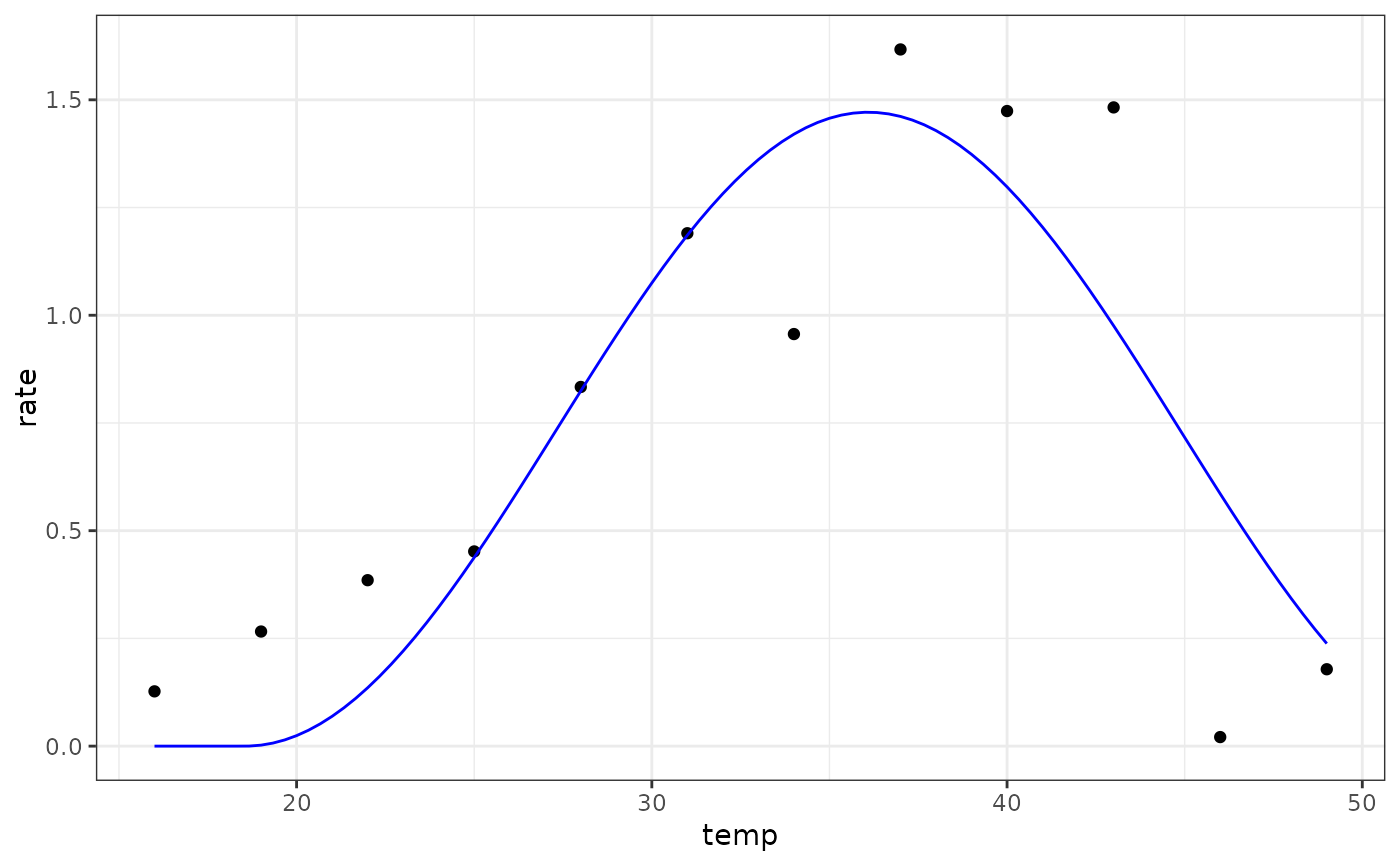
Mitchell Angilletta model for fitting thermal performance curves
Source:R/mitchell_2009.R
mitchell_2009.RdMitchell Angilletta model for fitting thermal performance curves
Value
a numeric vector of rate values based on the temperatures and parameter values provided to the function
Details
Equation: $$rate=\frac{1}{2 \cdot b} \cdot (1 + cos(\frac{temp - t_{opt}}{b} \cdot \pi)) \cdot a $$
When temperatures fall below topt - b or above topt + b, rates are set to 0 to prevent multimodality.
Start values in get_start_vals are derived from the data or sensible values from the literature.
Limits in get_lower_lims and get_upper_lims are derived from the data or based extreme values that are unlikely to occur in ecological settings.
References
Mitchell, W. A., & Angilletta Jr, M. J. (2009). Thermal games: frequency-dependent models of thermal adaptation. Functional Ecology, 510-520.
Examples
# load in ggplot
library(ggplot2)
# subset for the first TPC curve
data('chlorella_tpc')
d <- subset(chlorella_tpc, curve_id == 1)
# get start values and fit model
start_vals <- get_start_vals(d$temp, d$rate, model_name = 'mitchell_2009')
# fit model
mod <- nls.multstart::nls_multstart(rate~mitchell_2009(temp = temp, topt, a, b),
data = d,
iter = c(3,3,3),
start_lower = start_vals - 10,
start_upper = start_vals + 10,
lower = get_lower_lims(d$temp, d$rate, model_name = 'mitchell_2009'),
upper = get_upper_lims(d$temp, d$rate, model_name = 'mitchell_2009'),
supp_errors = 'Y',
convergence_count = FALSE)
# look at model fit
summary(mod)
#>
#> Formula: rate ~ mitchell_2009(temp = temp, topt, a, b)
#>
#> Parameters:
#> Estimate Std. Error t value Pr(>|t|)
#> topt 36.090 1.053 34.275 7.56e-11 ***
#> a 25.789 3.291 7.837 2.61e-05 ***
#> b 17.530 2.366 7.410 4.06e-05 ***
#> ---
#> Signif. codes: 0 ‘***’ 0.001 ‘**’ 0.01 ‘*’ 0.05 ‘.’ 0.1 ‘ ’ 1
#>
#> Residual standard error: 0.333 on 9 degrees of freedom
#>
#> Number of iterations to convergence: 38
#> Achieved convergence tolerance: 1.49e-08
#>
# get predictions
preds <- data.frame(temp = seq(min(d$temp), max(d$temp), length.out = 100))
preds <- broom::augment(mod, newdata = preds)
# plot
ggplot(preds) +
geom_point(aes(temp, rate), d) +
geom_line(aes(temp, .fitted), col = 'blue') +
theme_bw()
